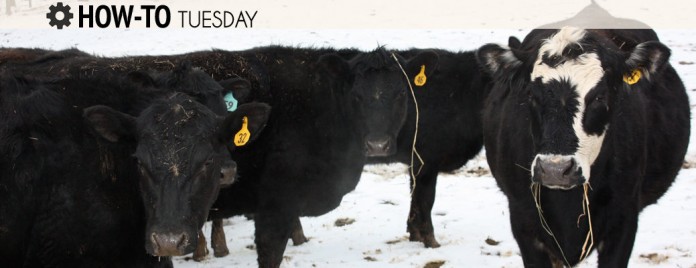WEST LAFAYETTE, Ind. — November is a good time for beef producers to assess their pastures and facilities and take care of some routine tasks to prepare their cattle operations for winter, a Purdue Extension beef specialist said.
Cattle are healthier, have more successful pregnancies and have better rates of gain when they have access to quality nutrition and facilities during the cold winter months.
Forage
One of the first recommendations from Ron Lemenager is to assess pastures and hay fields and have forages analyzed as soon as possible.
Once producers know what they have in terms of forage, they can start to plan their supplemental feeding strategies based on animal protein and energy needs.
Common supplements include corn and grain byproducts, such as soybean hulls, corn gluten feed and distiller’s grains.
“The market’s somewhat lower now, and it’s a good time to start checking supplement prices,” Lemenager said.
Supplements
While corn might be an economical energy supplement this year, Lemenager said producers need to compare prices and evaluate energy requirements for their herds before deciding. “Beef producers should ensure there are adequate minerals and vitamins in the diet by providing a high quality vitamin-mineral mix,” he said. “Minerals are especially important to immune function and reproduction.”
Breeding
Fall-calving herds are approaching breeding season, which means producers should have their bulls examined for reproductive soundness. Those exams should be conducted as early as possible so bulls that fail have time to recover, and producers have time to replace them when necessary.
If producers plan to synchronize estrus cycles in their cows and heifers, it’s also time to get those programs started.
Prostaglandin plus Melengestrol Acetate (MGA), a progestin product, is usually the cheapest and easiest for heifers, Lemenager said. The combination use of GnRH, CIDR and prostaglandin works well on cows.
Producers should check their artificial insemination supplies so they have time to stock up if needed.
“Spring calving isn’t that far away either,” Lemenager said. “It’s a good idea to check calving pens and supplies of pharmaceuticals and commercial colostrum replacements.”
For spring calving herds, now is a good time to wean calves. Producers with fall calving herds might consider early weaning to reduce the amount of supplement needed for lactating cows.
Health
Producers also should be starting routine health procedures on cows and calves, Lemenager said. “Now that we’ve had a killing frost, it’s time to consider deworming and vaccinating cows and calves,” he said.
Facilities
Facilities should be on producers’ minds as well. Now is the time to start double-checking fences and barns, especially if producers will be moving their herds closer to the headquarters or to a dry lot for the winter.
“Make sure tank heaters and electric waterers are winterized, running and ready to go,” Lemenager said.
The addition of windbreaks or pasture shelters can help cows retain body heat during winter. Cows can handle zero or sub-zero temperatures, but wind chill caused when hides are wet can be hard for the animals to handle.
“If we can reduce wind chill factors, that dramatically reduces energy requirements of cows,” Lemenager said.
Each 10-degree temperature drop in wind chill below 30 degrees Fahrenheit increases a cow’s energy requirement by 13 percent if the animal has a dry winter hair coat and a moderate body condition score. If the cow is wet or thin, the energy requirement increases by 30 percent for each 10-degree temperature drop.










